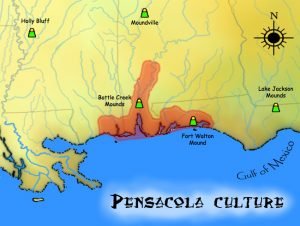Tocobaga Indians
Tocobaga Tribe. Meaning unknown, though toco means in Timucua “to come out,” “to proceed from.” Tocobaga Connections. (See Utina) Tocobaga Location. About Old Tampa Bay. Tocobaga Villages. The main town was at or near Safety Harbor at the head of Old Tampa Bay. Tocobaga History. Narvaez probably landed in the territory of this tribe in 1528, but his chroniclers speak of meeting very few Indians. Eleven years later De Soto’s expedition disembarked just south in Tampa Bay but came into little contact with this tribe. Two years after driving the French from St. Johns River in 1565, Menendez visited Tocobaga, … Read more

